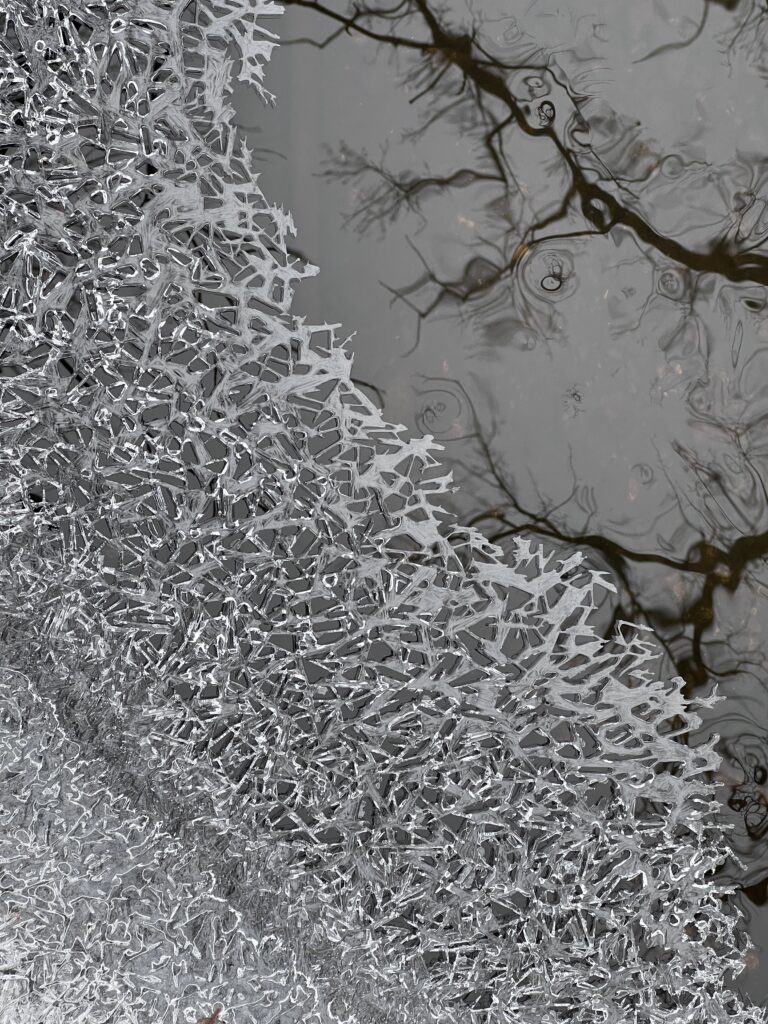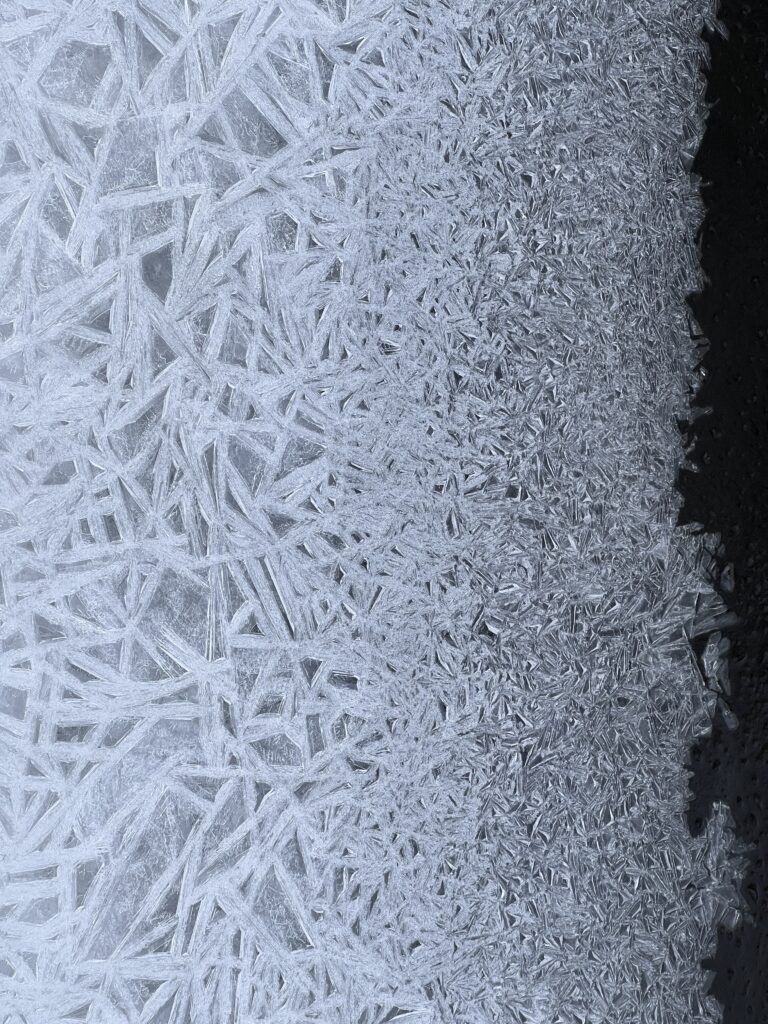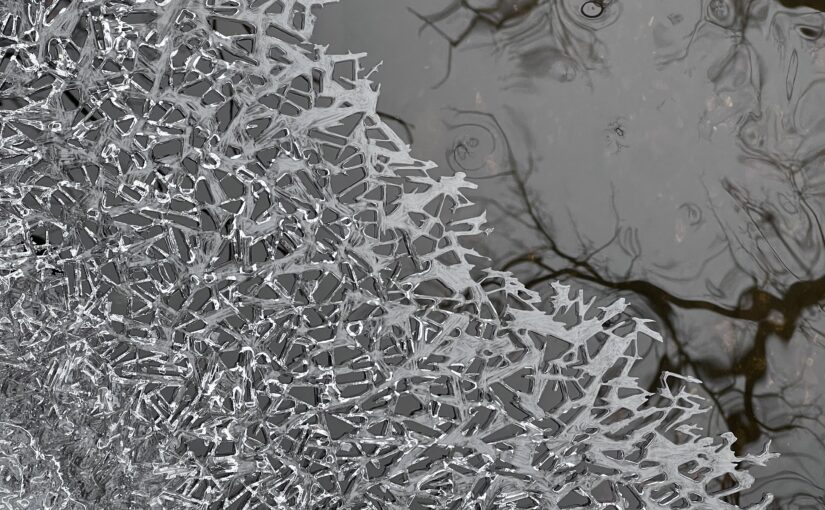5 January 2024
We’ve had a remarkably long fall. Although we’ve had some chilly periods, the temperatures are still tending to edge above freezing during the day, and in the last month we’ve had days that make it into the forties, and even the fifties. We’ve had two light snows: one but a dusting, and the second perhaps an inch, enough to almost bury the downed leaves. So the world is mostly gray and brown: the dully gray winter sky arches overhead, and the grass, trees, and carpet of leaves is brown brown brown. Very dull.
I have been waiting, with anticipation, for the first ice crystals to form on Minihaha creek, where I do most of my runs. I enjoy looking at ice on the creek as the winter progresses. First, most of the water is open, and a crystalline fringe forms along the edges of still portions of the creek. Next, the fringes grow, meeting in a delicate and parlous surface in the middle. As the cold deepens, the ice thickens. In the early part of the winter the ice tends to be crystal clear — although depending on the way in which the crystals form the may make portions of the surface matte white.
If things go right, we will, once the ice has spanned the creek, get a light dusting of snow. This is nice because it reveals the hydrology of the creek underneath. Where the water is warmed — as in the main channel, also know among geologists and hydrologists as the thaler – the snow will sublime off the surface of the ice, revealing the sinuous trace of the deepest part of the stream. Other warm spots — typically were springs occur in the creek bed – show themselves as circles or ellipses, occasionally with a center-point of open water. It seems to me that hydrologists could generate a very interesting map of the creek’s hydrology by flying a drone along it just after the first light dusting of snow on ice.
Today, of course, almost all of the creek was open water, and only a few placid areas had developed crystal fringes. But still, they were lovely. It is interesting to see the way the crystals develop from the edge out. There are distinct bands: in some places, presumably where the water froze rapidly due to shallowness, the crystals are minute and the surface reads as white; as one moves farther out into deeper water, the crystallization regime changes into latices of acicular crystals, some large and long, others small, and then, at the edge, protruding into the still liquid portion of the stream, one can see needle-like crystals projecting outward into the water.




I also pulled up a few pieces of ice, and saw that some of the crystallization went down quite deep — there were thin blades of ice that projected a centimeter or two towards the bottom. They had lovely tracery on their ends, similar to that of the surface ice crystals that project into the open water.



That last interesting thing I saw was an area in the open stream where water was flowing beneath a sheet of ice growing from a small islet. As the water approached the edge of the ice, some of it was reflected back, creating a fine fringe of standing-ripples that shimmered on the water. Very nice!
Views: 4
